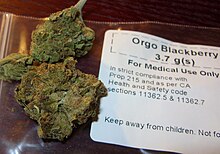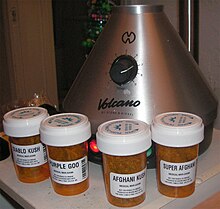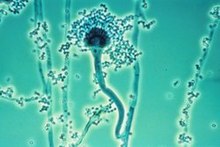What is medical cannabis
Medical cannabis refers to the parts of the herb cannabis used as a physician-recommended form of medicine or herbal therapy, or to synthetic forms of specific cannabinoids such as THC as a physician-recommended form of medicine. The Cannabis plant has a long history of use as medicine, with historical evidence dating back to 2737 BCE.[1] Cannabis is one of the 50 “fundamental” herbs of traditional Chinese medicine,[2] and is prescribed to for a broad range of indications.
On this page we try to give you background information about the research on medical cannabis.

Use of Medical Cannabis
Medical cannabis is illegal in most countries. A number of governments, including the U.S. Federal Government, allow treatment with one or more specific low doses of synthetic cannabinoids for one or more disorders.
Read more about use of medical cannabis
Clinical applications
A 2002 review of medical literature by Franjo Grotenhermen states that medical cannabis has established effects in the treatment of nausea, vomiting, premenstrual syndrome, unintentional weight loss, insomnia, and lack of appetite.
Read more about clinical applications of medical cannabis

Recent studies
There are multiple studies conducted on the use, effects and benefits of medical cannabis. Studies conducted include studies on medical cannabis as a treatment for glaucoma, multiple sclerosis, HIV and alzheimer.
Read more about recent studies on medical cannabis
National and International regulations
Medical use of cannabis or preparation containing THC as the active substance is legalized in Canada, Belgium, Austria, Netherlands, UK, Spain, Israel, Finland and some states in the U.S., although it is still illegal under U.S. federal law.
Medicinal compounds
Cannabis contains 483 compounds. At least 80 of these are cannabinoids, which are the basis for medical and scientific use of cannabis. This presents the research problem of isolating the effect of specific compounds and taking account of the interaction of these compounds.
Read more about the medicinal compounds of medical cannabis
Pharmacologic THC and THC derivatives
In the USA, the FDA has approved several cannabinoids for use as medical therapies: dronabinol (Marinol) and nabilone. These medicines are taken orally. These medications are usually used when first line treatments for nausea and vomiting associated with cancer chemotherapy fail to work. In extremely high doses and in rare cases “psychotomimetic” side effects are possible. The other commonly used antiemetic drugs are not associated with these side effects.
Read more about Pharmacologic THC and THC derivatives
Criticism
One of the major criticisms of cannabis as medicine is opposition to smoking as a method of consumption. However, smoking is no longer necessary due to the development of healthier methods. Today, medicinal cannabis patients can use vaporizers, where the essential cannabis compounds are extracted and inhaled. In addition, edible cannabis, which is produced in various baked goods, is also available, and has demonstrated longer lasting effects.
Read more about criticism on medical cannabis
Harm reduction

The harm caused by smoking can be minimized or eliminated by the use of a vaporizer[134] or ingesting the drug in an edible form. Vaporizers are devices that heat the active constituents to a temperature below the ignition point of the cannabis, so that their vapors can be inhaled. Combustion of plant material is avoided, thus preventing the formation of carcinogens such as polyaromatic hydrocarbons, benzene and carbon monoxide. A pilot study led by Donald Abrams of UC San Francisco showed that vaporizers eliminate the release of irritants and toxic compounds, while delivering equivalent amounts of THC into the bloodstream.[135]According to Matthew Seamon and his co-authors “Vaporizers are the optimal route of administration because they allow for rapid and complete absorption with minimal combustible byproducts, often considered the major health risk associated with smoking tobacco.”
In order to kill microorganisms, especially the molds A. fumigatus, A. flavus and A. niger, Levitz and Diamond suggested baking marijuana at 150 °C (302 °F) for five minutes. They also found that tetrahydrocannabinol (THC) was not degraded by this process.
Organizational positions
A number of medical organizations have endorsed reclassification of marijuana to allow for further study. These include, but are not limited to:
- The American Medical Association
- The American College of Physicians – America’s second largest physicians group
- Leukemia & Lymphoma Society – America’s second largest cancer charity
- American Academy of Family Physicians opposes the use of marijuana except under medical supervision
Other medical organizations recommend a halt to using marijuana as a medicine in U.S.
- The American Society of Addiction Medicine
Source: wikipediaCannabis medicinal
se refiere a las partes de la hierba de cannabis se utilizan como una forma médico-recomendados de la medicina o terapia a base de hierbas, o formas sintéticas de cannabinoides específicos como THC como una forma médico-recomendados de la medicina. La planta de cannabis tiene una larga historia de uso como medicina, con la evidencia histórica que se remonta a 2737 antes de Cristo. [1] El cannabis es una de las 50 hierbas “fundamentales” de la medicina tradicional china, [2] y se prescribe para una amplia gama de indications.On esta página tratamos de darle información básica acerca de la investigación sobre el cannabis medicinal.Medical Cannabis
bezieht sich auf die Teile der Pflanze Cannabis als Arzt empfohlene Form der Medizin oder Kräuter-Therapie, oder synthetische Formen von spezifischen Cannabinoide wie THC als Arzt empfohlene Form der Medizin. Die Cannabis-Pflanze hat eine lange Geschichte der Verwendung als Medizin, mit historischen Belege aus dem Jahr 2737 v. Chr.. [1] Cannabis ist eine der 50 “fundamental” Kräuter der traditionellen chinesischen Medizin, [2] und ist für eine breite Palette verschrieben von indications.On dieser Seite versuchen wir Ihnen Hintergrundinformationen über die Forschung zu medizinischen Cannabis.
Le cannabis médical
se réfère aux parties du cannabis aux herbes utilisées comme une forme médecin recommandé par la médecine ou la phytothérapie, ou à des formes synthétiques de cannabinoïdes spécifiques comme le THC comme une forme médecin recommandé par la médecine. La plante de cannabis a une longue histoire d’utilisation comme la médecine, avec des preuves historiques remontant à 2737 avant notre ère. [1] Le cannabis est l’une des 50 herbes “fondamentaux” de la médecine traditionnelle chinoise, [2] et est prescrit pour un large éventail indications.On de cette page, nous essayons de vous donner des informations générales sur la recherche sur le cannabis médical.Cannabis medica
si riferisce alle parti della pianta di cannabis usati come forma medico-raccomandata di medicina o terapia a base di erbe, o di forme sintetiche di cannabinoidi specifici come il THC come una forma medico-raccomandata di medicina. La pianta di cannabis ha una lunga storia di uso come medicina, con testimonianze storiche risalenti al 2737 aC. [1] La cannabis è una delle 50 erbe “fondamentali” della medicina tradizionale cinese, [2] ed è stato prescritto per una vasta gamma di indications.On questa pagina cerchiamo di darvi le informazioni di base sulla ricerca sulla cannabis medica.


